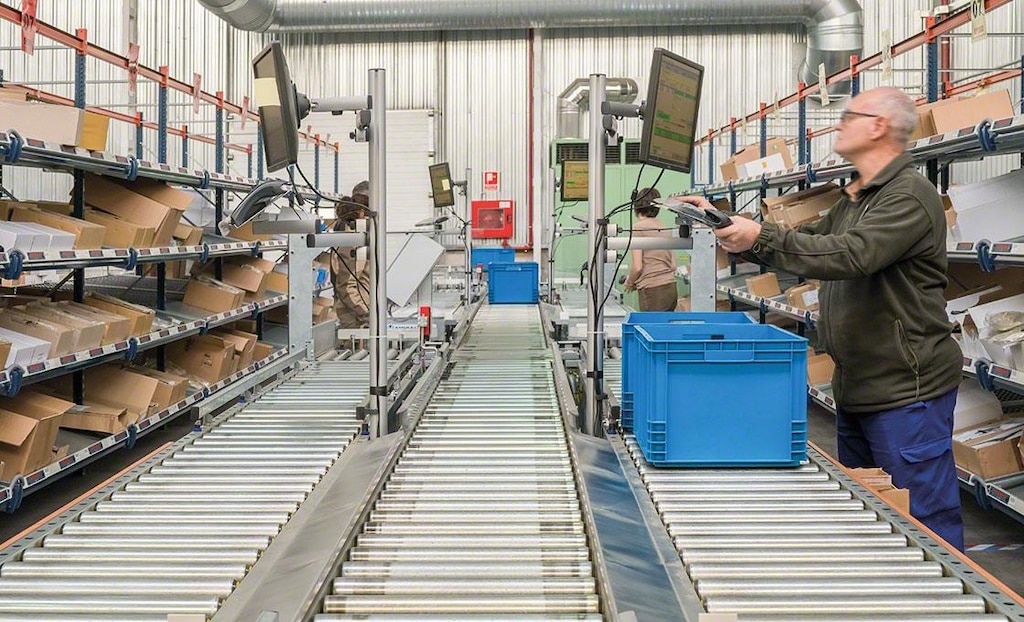
Logistics 4.0: transforming business today and tomorrow
From working with separate systems to hyper-connectivity; from multi-channel to omnichannel; and from responding to setbacks after the fact to preventing and avoiding them thanks to Big Data: this is how Logistics 4.0 will change (and is already changing) supply chains, a new paradigm that advocates the absolute digitalisation of processes in the face Industry 4.0's emergence, born of the fourth industrial revolution.
In this new scenario, information silos disappear, as technological advances and the Internet of Things (IoT) will make it possible for all devices to communicate with each other and share the same data. This will allow you to gain efficiency and speed and minimise losses in logistics activities.
What is Logistics 4.0?
The current Industry 4.0 , i.e., the fourth industrial revolution, is characterised by the major role played by hyper-connectivity and new information technologies in processes and ways of working, inevitably shaped by globalisation and the internationalisation of companies.
Logistic 4.0 as a concept is based on these same principles and refers to logistics management defined by interconnection, digitalisation of information and cloud based computer applications. The complexity of the information to be handled increases compared to logistics 2.0 and 3.0 models, based on advances in robotisation and the standardisation of processes that has become mandatory due to the expansion of international trade.
5 challenges of Logistics 4.0
However, despite the fact that Logistics 4.0 is already a reality at many stages of the distribution chain, the future presents a series of challenges that must be resolved if digitisation is to extend into all areas of product storage and distribution… These are summarised in these five points:
1. Reducing response times with tighter productions
The retail sector tends to work with increasingly shorter productions, and with flash-style turnover of items in establishments and online shops. Thus, smaller consignments must be handled and the response times for order delivery times reduced.
The key lies in acquiring flexibility, achieving a product that is both better and more adapted to the demands of the consumer, without losing the efficiency inherent in the organisation of order assembly or the management of large volumes.
2. Relying on intelligent logistics
Integrating intelligent logistics into the day-to-day running of an industry means taking advantage of all the technological possibilities available on the market. One such example is the Easy WMS warehouse management software, which facilitates the automation of warehouse processes.
3. Enabling real omnichannelity
Today, multi-channel methods have penetrated all layers of customer care. However, the fact remains that the information that arrives through each channel is dealt with in a distinct manner, which produces a discrepancy in dealing with the orders received.
Adapting the warehouse to an omnichannel-type logistics concept puts an end to this imbalance by unifying the flow of goods management and accelerating the preparation of orders.

4. Anticipating customer needs
The introduction of Big Data into the world of logistics makes it possible to predict customer needs and, consequently, anticipate them with supply actions linked to very reliable demand forecasts.
New analytical tools developed in the Logistics 4.0 environment combine data related to sales history, weather forecasts, local news and even conversations on social media to obtain a very close approximation of the approaching business landscape.
5. Controlling end-to-end process tracking
Gaining efficiency in logistics means controlling the tracking of each product from one end of the distribution chain to the other. For example, RFID labels, which help to monitor the position of objects remotely, but also the computer systems in which they are integrated and their standardisation throughout the supply chain, are very important in this situation.
Warehouse management and merchandise distribution with Logistics 4.0
The implementation of Logistics 4.0 in warehouse management and distribution of goods drives the application of advanced methods, such as the following:
- Use of drones or automated driver-less vehicles for order delivery.
- Predictive analysis of the behavior of the receivers to reduce the number of failed deliveries.
- Real-time evaluation of external factors to select the best delivery route, and instantaneous adaptation of routes in the event of unforeseen events.
- Detection of problems that may jeopardise the condition of products before they reach their destination.
One of the main allies in the application of the just-in-time system in a warehouse is probably Logistics 4.0. Both paradigms share the goal of getting the right product to the right customer at the right time.
